Exercise 26:
Verify:![]()
Solution:
(1) 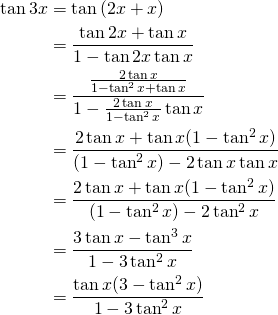
Finally:![]()
Exercise 27:
Solve for ![]() :
:![]()
Solution:
We have:![]()
This yields:![]()
Let’s square both side:![]()
![]()
![]()
![]()
![]()
We have a couple of cases for base angles here:![]()
Looking at the figure, we see that the red lines are the values of the ![]() when the
when the ![]() is
is ![]()
The angles here are:![]() and
and ![]()
We have to exclude ![]() since it does not verify the equation.
since it does not verify the equation.
However ![]() is a valid solution since
is a valid solution since ![]()
For the second factor:![]()
From the figure we see two values:
The third angle is ![]()
We can see that ![]()
If we try to plug the values in the equation it is not a solution.
The fourth angle is ![]()
We can see that ![]()
This one verifies our equation.
So the angles are:![]() and
and ![]()
Exercise 28:
Solve for ![]() :
:![]()
Solution:
We have:![]()
![]()
![]()
![]()
We get:![]()
![]()
Let ![]() with
with ![]()
We write:![]()
![]()
![]()
![]()
The values of ![]() :
:![]()
![]()
![]() is not valid since it is less than
is not valid since it is less than ![]()
The possible values of ![]()
Looking at the figure, for this ![]() we have two possible values for the
we have two possible values for the ![]()
![]()
This yields:![]()
Plug in:![]()
Now the left side:![]()
The second angle is:![]()
When we plug in this does verifies the equation.
The solutions:![]()
![]()
Exercise 29:
Solve for ![]() :
:![]()
Solution:
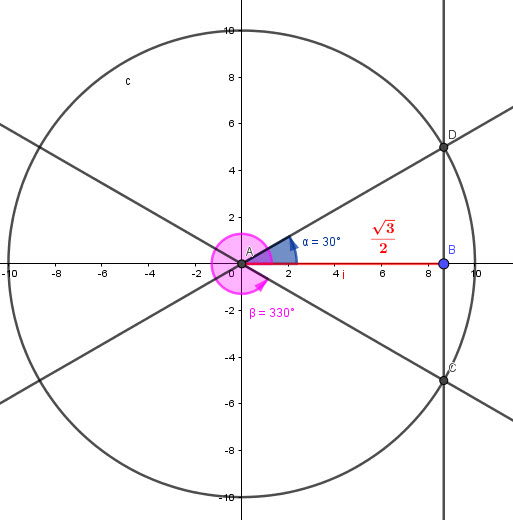
We can write:
![]()
![]()
![]()
The base angle here is ![]()
Looking at the graph we have the folloing solutions:
![]() and
and ![]()
Exercise 30:
Solve for ![]() :
:![]()
Solution:
![]()
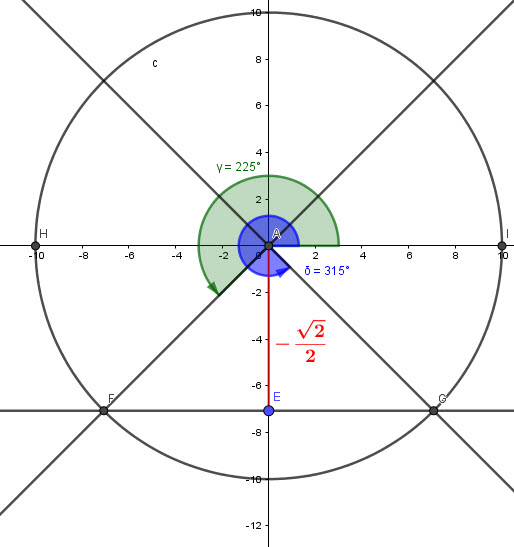
![]()
![]()
![]()
![]()
The base angle here is ![]()
From the graph:
We can see that the two angles are:
![]()
and
![]()
Finally the soultions are:
![]() and
and ![]()
Exercise 31:
Solve for ![]() :
:![]()
Solution:
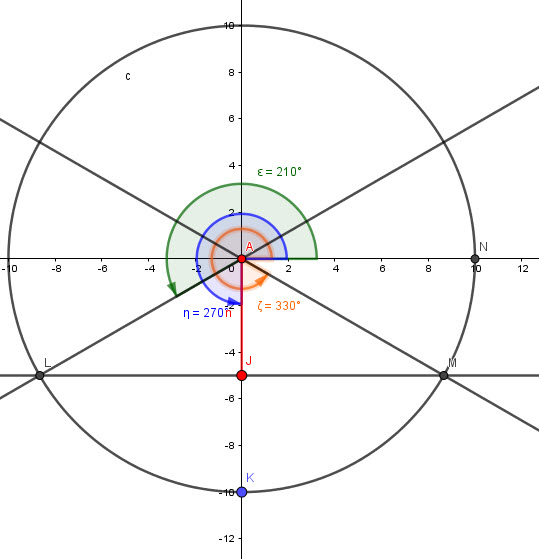
we know that:
![]()
The equation becomes:
![]()
![]()
We re-write:
![]()
let ![]()
![]()
![]()
![]()
The base angle is ![]()
From the graph:
![]()
![]()
Both verify the equation.
The second case:
![]()
The base angle here is ![]() and is the only one:
and is the only one:
![]()
This also satisfies the equation:
The solutions:
![]() ,
, ![]() and
and ![]()
Exercise 32:
Solve for ![]() :
:![]()
Solution:
But we know that:![]()
We get:![]()
![]()
Let ![]()
We write:![]()
![]()
![]()
![]()
Case 1:![]()
This gives:![]()
This verifies the equation:![]()
Case 2:
![]()
The base angle here is ![]()
Two subsequent cases here:![]()
This yields:![]()
This does not verify the equation and is not a solution:![]()
The second case here:![]()
![]()
Checking in the equation:![]()
The solutions:![]()
Exercise 33:
Solve for ![]() :
:![]()
Solution:
![]()
![]()
![]()
This gives:![]()
![]()
Exercise 34:
Solve for ![]() :
:![]()
Solution:
![]()
Let ![]()
We can write:![]()
![]()
Two roots here:![]()
This root leads to two solutions:![]() :
:
Case 1:![]()
![]()
Case 2:![]()
![]()
Both cases verify the equation:![]()
For the second root:
![]()
One solution here:![]()
The solution:![]()
This verifies the equation:![]()
Finally the solutions are:![]() ,
, ![]() and
and ![]()
Exercise 35:
Solve for ![]() :
:![]()
Solution:
[accordion hideSpeed=”300″ showSpeed=”400″]
[item title=”Click here to see the solution to ex35 “]
![]()
Let ![]()
We get:![]()
Roots:
![]()
This means:![]()
This yields:![]()
![]()
![]()
This yields:![]()
Finally:
The solutions are:![]() and
and ![]()
Exercise 36:
Solve for ![]() :
:![]()
Solution:
![]()
We write:![]()
![]()
Two cases:![]()
This has two subsequent possibilities:![]()
and![]()
Both verify the equation.
The other case:
![]()
![]()
Two subsequent solutions:![]()
and![]()
For ![]() :
:![]()
means ![]() which is true.
which is true.
For ![]() :
:![]()
means ![]() which is true.
which is true.
For ![]() :
:![]()
means ![]() which is true.
which is true.
For ![]() :
:![]()
![]()
![]() which is true.
which is true.
Finally the solutions are:
![]() ,
, ![]() ,
,![]() and
and ![]()
Exercise 37:
Solve for ![]() :
:![]()
Solution:
![]()
Let ![]()
This yields:
![]()
![]()
![]()
![]()
![]()
Case 1:
![]()
This gives:
![]()
Case 2:
![]()
Looking at the graph, we have two additional cases:
![]()
![]()
The other additional case:
![]()
![]()
Finally the solutions are:
![]() ,
,![]() ,
, ![]()
Exercise 38:
Given ![]() ,
, ![]() and
and ![]()
Find ![]() ,
, ![]() and
and ![]()
Solution:
Since ![]() , we have the angle
, we have the angle ![]()
That means ![]()
For side ![]()
![]()
![]()
![]()
![]()
Exercise 39:
Given ![]() ,
, ![]() and
and ![]()
Find ![]() ,
, ![]() and
and ![]()
Solution:
We can see that we two possible values for ![]() :
:
![]()
This yields:
![]()
![]()
![]()
![]()
![]()
![]()
![]()
For ![]()
![]()
![]()
![]()
That means:
![]()
![]()
For ![]()
![]()
![]()
![]()
That means:
![]()
![]()
[/item] [/accordion]
Exercise 40:
Given ![]() ,
, ![]() and
and ![]()
Find Angles ![]() ,
, ![]() and
and ![]()
Solution:
[accordion hideSpeed=”300″ showSpeed=”400″]
[item title=”Click here to see the solution to ex40 “]
Looking at the sides we can deduct that the biggest angle is ![]()
Let’s calculate it:
![]()
![]()
![]()
![]()
No other angle is obtuse.
![]()
![]()
![]()
![]()
The angle ![]() :
:![]()
Finally:![]() ,
,![]() and
and ![]()
Exercise 41:
Given ![]() ,
, ![]() and
and ![]()
Find Angles ![]() ,
, ![]() and
and ![]()
Solution:
Looking at the sides we can deduct that the biggest angle is ![]()
Let’s calculate it:
![]()
![]()
![]()
![]()
No other angle is obtuse.
![]()
![]()
![]()
![]()
The angle ![]() :
:![]()
Finally:![]() ,
,![]() and
and ![]()
Exercise 42:
Given ![]() ,
, ![]() and
and ![]()
Find ![]() ,
, ![]() and
and ![]()
Solution:
We know that:![]()
We get![]()
![]()
![]()
We solve for ![]() :
:![]()
![]()
![]()
The angles:![]()
![]()
![]()
![]()
![]()
Case summary:![]() ,
,![]() and
and ![]()
![]()
The angles:![]()
![]()
![]()
![]()
![]()
Case summary:![]() ,
,![]() and
and ![]()
Exercise 43:
Simplify:
![]()
Solution:
![]()
Finally:
![]()
Exercise 44:
Simplify:
![]()
Solution:
![]()
Exercise 45:
Verify that:
![]()
Solution:
![]()
![]()
Finally:
![]()
Exercise 46:
Evaluate:
![]()
Solution:
![]()
Finally
![]()
Exercise 47:
Evaluate:
![]()
Solution:
![]()
![]()
![]()
![]()
![]()
Only the first factor:
![]()
Two cases:
![]()
![]()
Exercise 48:
Solve for ![]()
![]()
Solution:
![]()
We factor:![]()
We have to check both factors:
First factor:![]()
![]() with
with ![]()
![]() with
with ![]()
Second Factor:![]()
![]()
![]()
Case when ![]()
Base angle here is ![]()
![]() with
with ![]()
![]() with
with ![]()
Case when ![]()
Base angle here is ![]()
![]() with
with ![]()
![]() with
with ![]()
Finally all 6 solutions verify the equation:
![]() with
with ![]()
![]() with
with ![]()
![]() with
with ![]()
![]() with
with ![]()
![]() with
with ![]()
![]() with
with ![]()
Exercise 49:
Solve for ![]()
![]()
Solution:
![]()
We can factor:
![]()
![]()
Solutions:
![]()
Base angle ![]()
This will not satisfy the equation due the tangent.
![]()
![]()
Both following solutions are valid
![]()
![]()
![]()
![]()
Exercise 50:
Solve for ![]()
![]()
Solution:
![]()
Case 1:
![]()
![]()
![]()
![]()
![]()
![]()
![]()
![]()
Case 2:
![]()
![]()
![]()
![]()
![]()
![]()
![]()
![]()


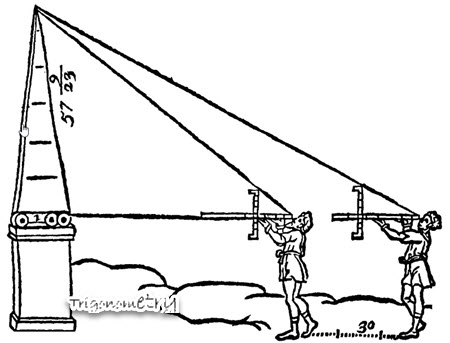
Be the first to comment